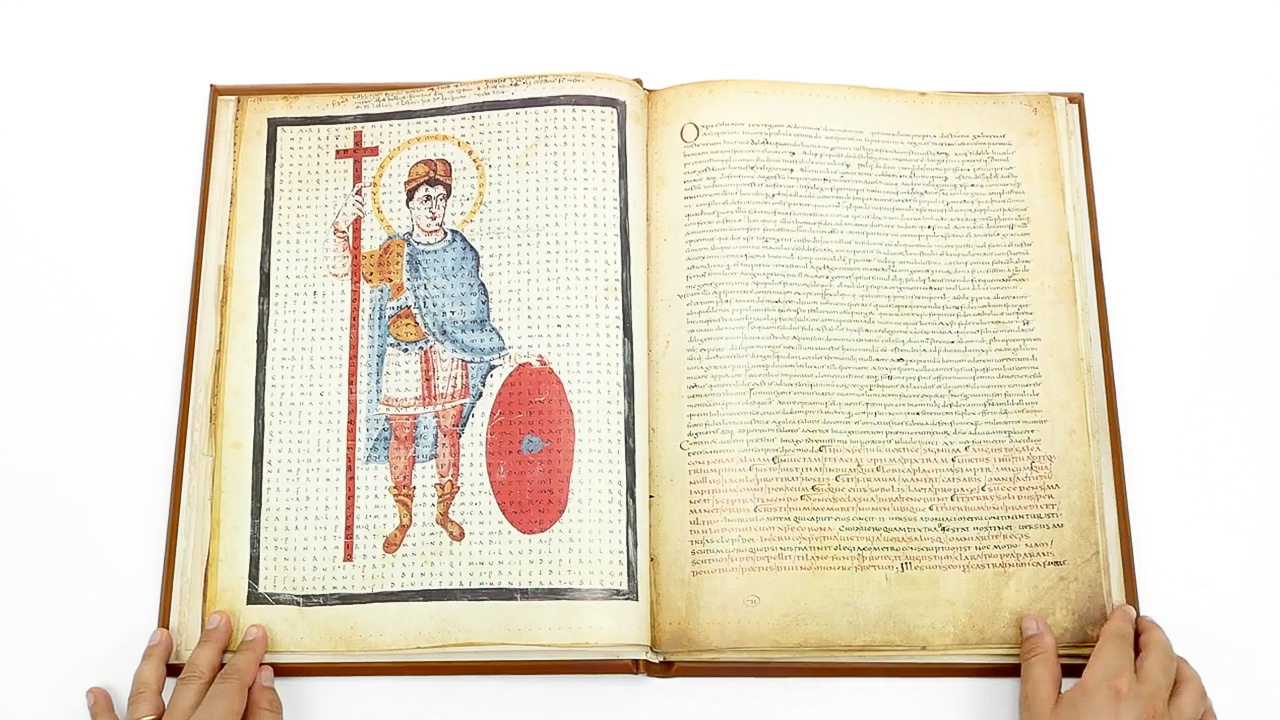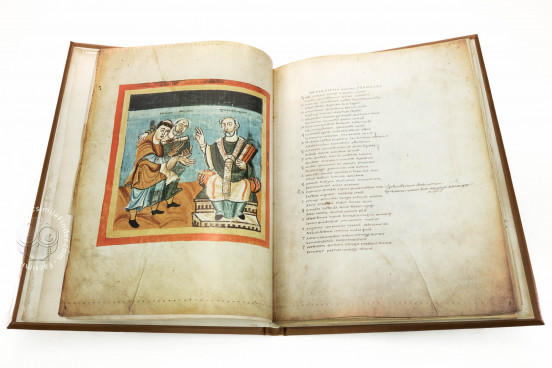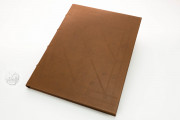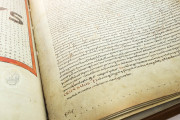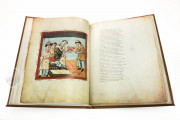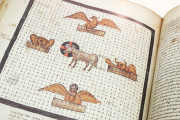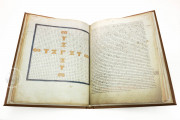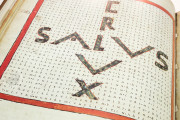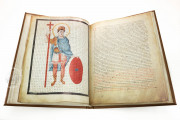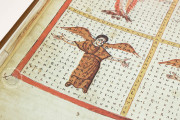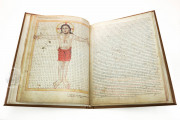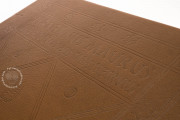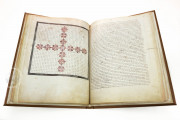The Vienna manuscript of In Honor of the Holy Cross dates from the lifetime of Rabanus Maurus (d. 856), the text's author, and he may have supervised its production. Copied around 830-840 in Mainz or Fulda, it is a collection of carmina figurata ("figured poems")—text presented in grids of letters with superimposed images. Twenty-eight of the figured poems focus on aspects of the cross, revered by Christians. Also included are a dedication to Otgar, Archbishop of Mainz, and a figured poem of the Carolingian emperor Louis I, "the Pious," and two frontispiece miniatures. The high quality of the painting complements the great sophistication of the Latin poetry.
Rabanus finished the collection of poems titled In honorem sanctae crucis around 810. He subsequently added prose paraphrases of the verses, and the dedications were also composed later. Around eighty manuscript copies survive from the ninth to twelfth centuries, attesting to the text's immense popularity.
Image in Verse and Explanation in Prose
The manuscript opens with prefatory material, which includes two dedication miniatures (fols. unnumbered verso-5v). There follows the original collection (fols. 6v-34r). For each of the cross poems, the figured poem is laid out within a thin painted frame on the left-hand page of an opening. An explanation (declaratio figurae) occupies the facing page. Prose paraphrases of the figured poems follow (fols. 34v-47r).
Text as Image
The letters of the poems, arranged into grids, embody and celebrate the cross. The letters are formed into animal, angel, and human figures; letters; geometric shapes; and foliate motifs that carry additional significance. The poems thus operate as both image and text and are particularly dense in meaning. The process of deciphering the poems works to reveal and affirm mystical theological concepts.
A Compendium of Scripts
Visual differentiation and sophistication are endemic in the scripts of the Vienna codex. Caroline Minuscule is used for the declaratio on the right page of each opening. The letter grids of the figured poems combine Rustic Capitals and Uncials, the latter used for the versus intexti—sub-texts within the overall grid text. These intricate relationships demanded of the scribes exceptional skill and careful planning.
An Author Portrait
The last of the figured poems features the author prostrate in prayer before the cross (fol. 33v). The text in red Uncials, outlined by the kneeling figure, tonsured and in monastic garb, asks that Christ protect "Rabanus myself."
Presentation Copy
The Vienna manuscript may have been made for presentation to Otgar, who served as archbishop of Mainz from 826 to 847. The opening miniature represents Rabanus, with his teacher, Alcuin of York, presenting the book to a seated figure wearing the pallium of an archbishop (fol. 1v). The manuscript came into the possession of the Benedictine monastery of Saint Stephen at Würzburg by the fifteenth century. By 1576 it was in the court library of the Holy Roman Emperors in Vienna (eventually the Osterreichische Nationalbibliothek). Its binding of white parchment over pasteboard dates from 1752.
We have 1 facsimile edition of the manuscript "Vienna In Honor of the Holy Cross": Hrabanus Maurus - Liber de laudibus sanctae Crucis facsimile edition, published by Akademische Druck- u. Verlagsanstalt (ADEVA), 1972
Request Info / Price
